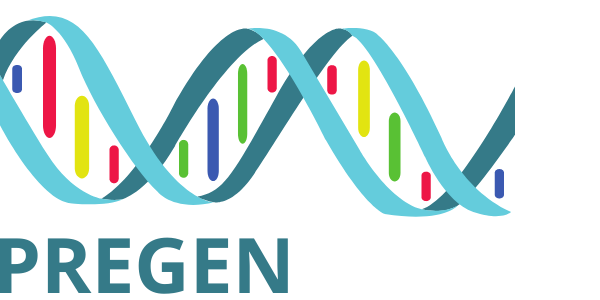Research

Gene Discoveries - A/Prof Tony Roscioli (PreGen CI)
46 GENE/PHENOTYPE TOTAL DISCOVERIES
22 GAIA GENE
SLC13A4 – skeletal dysplasia (ms prep)
CBX1 – ID (ms prep)
GTF3C3 – ID (ms prep)
TTI1 – ID (ms prep)
ZMYND8 – ID in press
FBXW7 – ID [PMID 35395208]
LMOD2 – cardiomyopathy [35082396 ]
ZNFX1 – HLH immunodeficiency [33872655
CDH11 – cleft/Teebi [33811646]
AGO2 – ID [33199684]
MTPAP – encephalopathy [31779033]
GDF11 – orofacial clefting [31215115]
FST – orofacial clefting [31215115]
PLOD3 – Connective tissue disorder [31129566]
ATM1 – ID [30929742]
SMARCC2 – ID [30580808]
MSL3 – ID [30224647]
MED13L – ID [29511999]
PUM1 – ID [29474920]
KCN2 – encephalopathy [29069600]
ARHGAP29 – orofacial clefting [28029220]
ARV1 – encephalopathy [27270415]
5 PHENOTYPE EXPANSIONS
BCAS3 – [34981858]
KIF1a – [32652677]
LARS2 – [32442335]
ECHS1 – [28409271]
GRIN2B – [28377535]
19 RESEARCH COHORT GENE IDENTIFICATIONS
BMP7 – GWAS craniosynostosis [33266521]
CTNND1 – orofacial clefting [29805042]
PLEKHA7 – orofacial clefting [29805042]
PLEKHA5 – orofacial clefting [29805042]
ESRP2 – orofacial clefting [29805042]
PLEXND1 – Moebius synd [26068060]
REV3L – Moebius synd [26068060]
IL11RA – crouzon [24498618]
BMP2 – GWAS craniosynostosis [23160099]
BBS9 – GWAS craniosynostosis [23160099]
PIGO – ID [2268086]
CRAPPB – Walker Warburg [22522421]
ACTB – Baraitser Winter [22366783]
ACTG1 – Baraitser Winter [22366783]
B3GNT1 – Walker Warburg [23359570]
PIGV – ID [20802478]
SLC29A3 – Immunodeficiency [19336477]
SP110 – Immunodeficiency [16648851]
ENPP1 – Arterial calcification [12881724]
Journal Articles
Fetal diagnosis of Mowat‐Wilson syndrome by whole exome sequencing. American Journal of Medical Genetics Part A. 179. 10.1002/ajmg.a.61295. Evans, Carey‐Anne, Pinner, Jason, Chan, Cheng, Bowyer, Lucy, Mowat, David, Buckley, Michael, Roscioli, Tony. (2019).
Mowat‐Wilson syndrome (MWS) is a complex genetic disorder associated with heterozygous variation in ZEB2. It is mainly characterized by moderate‐to‐severe intellectual disability, facial dysmorphism, epilepsy, and various malformations including Hirschsprung disease, corpus callosum anomalies, and congenital heart defects. It is rarely diagnosed prenatally and there is limited information available on the prenatal phenotype associated with MWS. Here we report the detection of a heterozygous de novo nonsense variant in ZEB2 by whole exome sequencing in a fetus with microphthalmia in addition to cardiac defects and typical MWS facial dysmorphism. As the prenatal phenotypic spectrum of MWS expands, the routine addition of fetal genomic testing particularly in the presence of multiple malformations will increase both the sensitivity and specificity of prenatal diagnostics.
De novo putative loss-of-function variants in TAF4 are associated with a neuro-developmental disorder. Human Mutation.
Beau D E Janssen, Marie-Jose H van den Boogaard, Klaske Lichtenbelt, Eleanor G Seaby, Karen Stals, Sian Ellard, Ruth Newbury-Ecob, Abhijit Dixit, Laura Roht, Sander Pajusalu, Katrin Õunap, Helen V Firth, Michael Buckley, Meredith Wilson, Tony Roscioli, Timothy Tidwell, Rong Mao, Sarah Ennis, Sjoerd J Holwerda, Koen van Gassen, Richard H van Jaarsveld. 2022.
TATA-binding protein associated factor 4 (TAF4) is a subunit of the Transcription Factor IID (TFIID) complex, a central player in transcription initiation. Other members of this multimeric complex have been implicated previously as monogenic disease genes in human developmental disorders. TAF4 has not been described to date as a monogenic disease gene. We here present a cohort of eight individuals, each carrying de novo putative loss-of-function (pLoF) variants in TAF4 and expressing phenotypes consistent with a neuro-developmental disorder (NDD). Common features include intellectual disability, abnormal behavior, and facial dysmorphisms. We propose TAF4 as a novel dominant disease gene for NDD, and coin this novel disorder “TAF4-related NDD” (T4NDD). We place T4NDD in the context of other disorders related to TFIID subunits, revealing shared features of T4NDD with other TAF-opathies.
De Novo ZMYND8 Variants Result in an Autosomal Dominant Neurodevelopmental Disorder with Cardiac Malformations. Journal of Clinical Genetics and Genomics.
Kerith-Rae Dias, Colleen M. Carlston, Laura E.R. Blok, Lachlan De Hayr, Urwah Nawaz, Carey-Anne Evans, Pinar Bayrak-Toydemir, Stephanie Htun, Ying Zhu, Alan Ma, Sally Ann Lynch, Catherine Moorwood, Karen Stals, Sian Ellard, Matthew N. Bainbridge, Jennifer Friedman, John G. Pappas, Rachel Rabin, Catherine B. Nowak, Jessica Douglas, Theodore E. Wilson, Maria J. Guillen, Sacoto Sureni, V. Mullegama, Timothy Blake Palculict, Edwin P. Kirk, Jason R. Pinner, Matthew Edwards, Francesca Montanar, Claudio Graziano, Tommaso Pippucci, Bri Dingmann, Ian Glass, Heather C. Mefford, Takeyoshi Shimoji, Toshimitsu Suzuki, Kazuhiro Yamakawa, Haley Streff, Christian P. Schaaf, Anne M. Slavotinek, Irina Voineagu, John C. Carey, Michael F. Buckley, Annette Schenck, Robert J. Harvey, Tony Roscioli. (2022).
PURPOSE: ZMYND8 encodes a multi-domain protein that serves as a central interactive hub for coordinating critical roles in transcription regulation, chromatin remodelling, regulation of super-enhancers, DNA damage response and tumor suppression. We delineate a novel neurocognitive disorder caused by variants in the ZMYND8 gene.
METHODS: An international collaboration, exome sequencing, molecular modelling, yeast two-hybrid assays, analysis of available transcriptomic data and a knockdown Drosophila model were used to characterise the ZMYND8 variants.
RESULTS: ZMYND8 variants were identified in 11 unrelated individuals; ten occurred de novo and one suspected de novo ; two were truncating, nine were missense, of which one is recurrent. The disorder is characterized by intellectual disability with variable cardiovascular, ophthalmologic and minor skeletal anomalies. Missense variants in the PWWP domain of ZMYND8 abolish the interaction with Drebrin and missense variants in the MYND domain disrupt the interaction with GATAD2A. ZMYND8 is broadly expressed across cell types in all brain regions and shows highest expression in the early stages of brain development. Neuronal knockdown of the Drosophila ZMYND8 ortholog results in decreased habituation learning, consistent with a role in cognitive function.
CONCLUSION: We present genomic and functional evidence for disruption of ZMYND8 as a novel etiology of syndromic intellectual disability.
Biallelic variants in TUBGCP6 result in microcephaly and chorioretinopathy 1: Report of four cases and a literature review
2023
Autosomal recessive microcephaly and chorioretinopathy-1 (MCCRP1) is a rare Mendelian disorder resulting from biallelic loss of function variants in Tubulin-Gamma Complex Associated Protein 6 (TUBGCP6, MIM#610053). Clinical features of this disorder include microcephaly, cognitive impairment, dysmorphic features, and variable ophthalmological anomalies including chorioretinopathy. Microcephaly can be recognized prenatally and visual impairment becomes evident during the first year of life. The clinical presentation resembles the findings in some acquired conditions such as congenital toxoplasmosis and cytomegalovirus infections; thus, it is important to recognize and diagnose this syndrome in view of its impact on patient health management and familial reproductive plans. To date, only seven molecularly confirmed patients from five unrelated families have been reported. We report an additional four unrelated patients with TUBGCP6 variants including one prenatal diagnosis and review the clinical phenotypes and genotypes of all the known cases. This report expands the molecular and phenotypic spectrum of TUBGCP6 and includes additional prenatal findings associated with MCCRP1.
